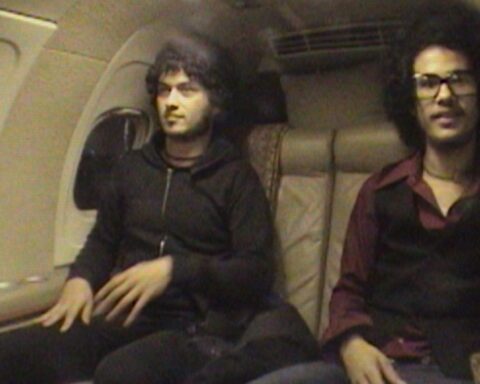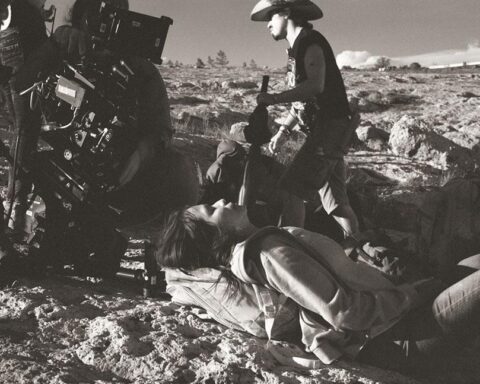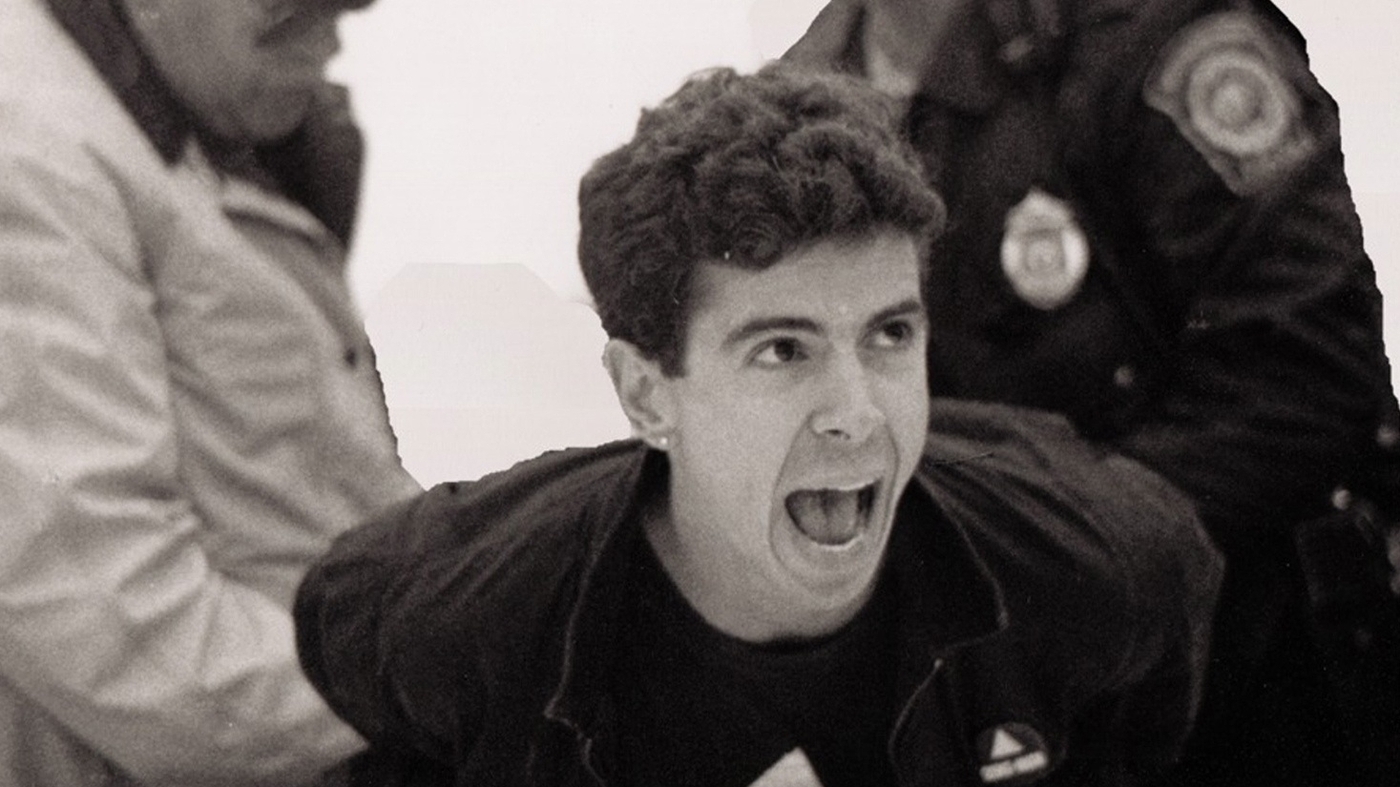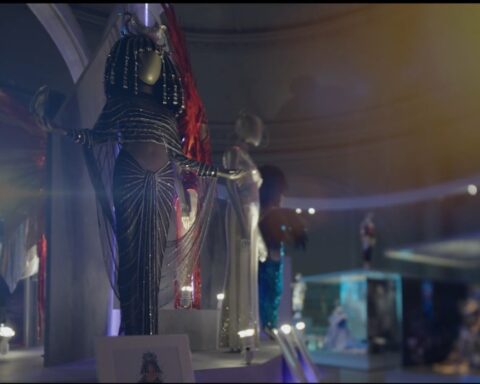My Psychedelic Love Story
(USA, 102 min.
Dir. Errol Morris
My Psychedelic Love Story is the latest in what’s getting to be long a line of docs made by Errol Morris, which encourage his central characters to tell their side of what happened in key moments in their lives. In this case, it’s Joanna Harcourt-Smith who takes centre stage as she recounts the story of what her life was like as the lover of the notorious LSD advocate Timothy Leary in the mid-Seventies. Armed with his infamous Interrotron, the two-way mirror system that allows Morris and his protagonists to see each other face to face while simultaneously showing the subject looking directly into the camera, the director turns Harcourt-Smith’s tales into something resembling truth at 24 frames per second. But are the stories real? It’s one of many questions that Morris’ film asks but doesn’t really answer.
Errol Morris’ journey as a documentary filmmaker has been from objectivity to subjectivity. Like many auteur filmmakers, his films represent his vision of events he depicts, not necessarily correlated by other, even professional, journalists or doc-makers. Morris achieved great renown with The Thin Blue Line, a film in which his investigation of the murder of a policeman not only proved that the man sentenced to death for the homicide was innocent but that another person known by the police was guilty. Though the film was criticized at the time for using re-enactments, there is no doubt that Morris’s intent was to achieve objectivity and justice. Since his Oscar-winning The Fog of War and an increased reliance on the Interrotron, Morris has shifted his gaze from that of an objective observer to a brilliant enabler of other people’s points-of-view. While that stance worked well with the self-examining Robert McNamara in Morris’ Academy Award winner, it has proven to be highly problematic when showcasing right-wing true believers Donald Rumsfeld (The Unknown Known) and Steve Bannon (American Dharma).
Harcourt-Smith is hardly as contentious a figure as Rumsfeld or Bannon but she cheerfully admits to not always telling the truth. At one point even Morris catches her out, when Harcourt-Smith tells a story about taking off one article of clothing when, according to her own autobiography, Tripping the Bardo with Timothy Leary: My Psychedelic Love Story, she was actually naked. When caught, she simply bursts out laughing and continues with her tale. Morris chose to make a film with her because he was charmed by her and as a director, he’s able to convey that charm to the viewer.
In the film, it’s evident that Harcourt-Smith loves to tell her stories and it turns out her life is entirely worthy of a full doc treatment. Born at the Palace Hotel in St. Moritz, Switzerland, she is the step-daughter of Arpad Plesch, an eccentric financier, who married Harcourt-Smith’s grandmother—and then her mother, when her grandmother died. To say that Plesch was wealthy is an understatement and although the documentary doesn’t overly dwell on it, the young Joanna was part of the European jet set by the time she was in her teens. Before meeting Leary, she had hung out with the Rolling Stones, was briefly the girlfriend of the guy who inspired the song “Tumbling Dice,” and knew the Aga Khan, Salvador Dali and Gunter Sachs, who had been married to Brigitte Bardot.
She was ready for adventure and found it with Leary, the psychedelic guru on the run from the U.S. government. Declared public enemy number one, Leary had to flee Switzerland soon after he met Harcourt-Smith. The tales of their initial life affair, laced with acid, celebrities, politics and romance, may have been brief but it was filled with crazy anecdotes. Before being captured in Afghanistan, Leary had formed a strong enough bond with Harcourt-Smith that she felt impelled to fight for his freedom from US prison for the next four years. As Harcourt-Smith recounts her stories—some believable, some not—Morris peppers the screen with visual representations of the hippie era: tarot cards, Alice in Wonderland animation, Warhol-style multiples and graphic images of the violent and mad times that were taking place then.
Timothy Leary was let out of prison after agreeing to cooperate with the Republican administration and turn in his old underground friends. Harcourt-Smith and Leary spent time together in a witness protection program to the great anger of Leary’s old friends. Many accused her of helping Leary to sell out and spread the rumour that she was working with the CIA. Indeed, it was after watching Morris’ docudrama Wormwood, which dealt with LSD and the CIA, that Harcourt-Smith contacted the director. She seems genuinely confused as to what happened to her and Leary. While in the protection program, the two fought and Leary disappeared from her life for good. Harcourt-Smith doesn’t have the answers and neither does Morris.
My Psychedelic Love Story has turned out to be a homage to Joanna Harcourt-Smith. She died of cancer in October, having seen and approved of Morris’ film. As for the truth of Harcourt-Smith’s life with Leary, we are left to ponder its mysteries and be amused by its passion and charm.
My Psychedelic Love Story is now available to stream on Crave.











